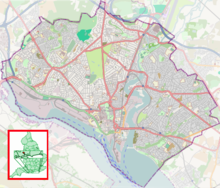Crowdsourcing/In practice/Defining progress: geographical data
OpenStreetMap (OSM) is “an open initiative to create and provide free map data to anyone who wants them”. Its maps are built from imports of existing free databases and from individuals using widely available GPS devices and software. OSM presently has one and a half million registered users and about 30% of registered users have made at least one edit. The “Open” means both an open process of gradual improvement and that the resulting geodata is open for use in other web sites and apps.

OSM is not a Wikimedia site and its output looks very different from Wikipedia, but as a community has striking similarities with Wikipedia which underlie its success.
- There is an overarching, easily-understandable goal.
- Existing things such as Ordnance Survey maps can serve as a tangible model of the goal, even though the content of OS cannot be copied.
- The goal allows scope for individual choices and judgements (for instance, in interpreting what it means to document all the features of a particular area).
- There is still a strong limit on individual judgement and hence disagreement (because the map has to reflect real, notable geographical features).
- People may make very different contributions, but the direction of progress is clear. It is verifiable that the map is becoming more accurate and detailed.
- Users retain legal ownership of contributions but apply a free licence (CC-BY-SA and an open data licence) to allow reuse.
- The free licence and hosting by a nonprofit foundation show contributors that they are working for the public good.
- The technology makes each contribution record publicly visible, so people can build reputations. Particularly productive or disruptive users will stand out.
- It is technically possible to insert pranks or hoaxes, but those will be visible to the other contributors and can be undone.
- Coverage is uneven, reflecting the distribution of the required technologies and the interests of contributors.
- If it had waited to be “finished” before being published, it would not exist in a useful form. Releasing the incomplete product to the public has been crucial in getting them to improve it.
- There are leaderboards for contributors and users can build up showcases of badges and awards, but game-like rewards are not central to the site and many contributors ignore them.
As well as encouraging casual users to edit, OSM’s interface also puts a high priority on exporting and reuse. Too much control and scarcity would be counter-productive: the ease of getting data out gives people confidence to put their data in. Free reuse has led to the ubiquity of OSM in ever more applications and devices, which in turn gives the public a stake in its quality.
| Previous | Index | Next |
